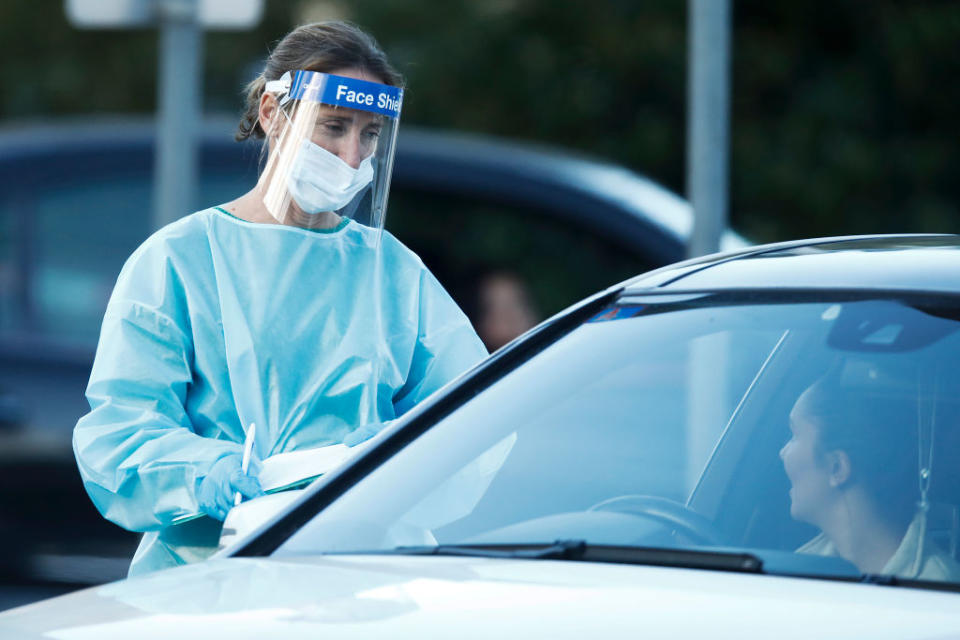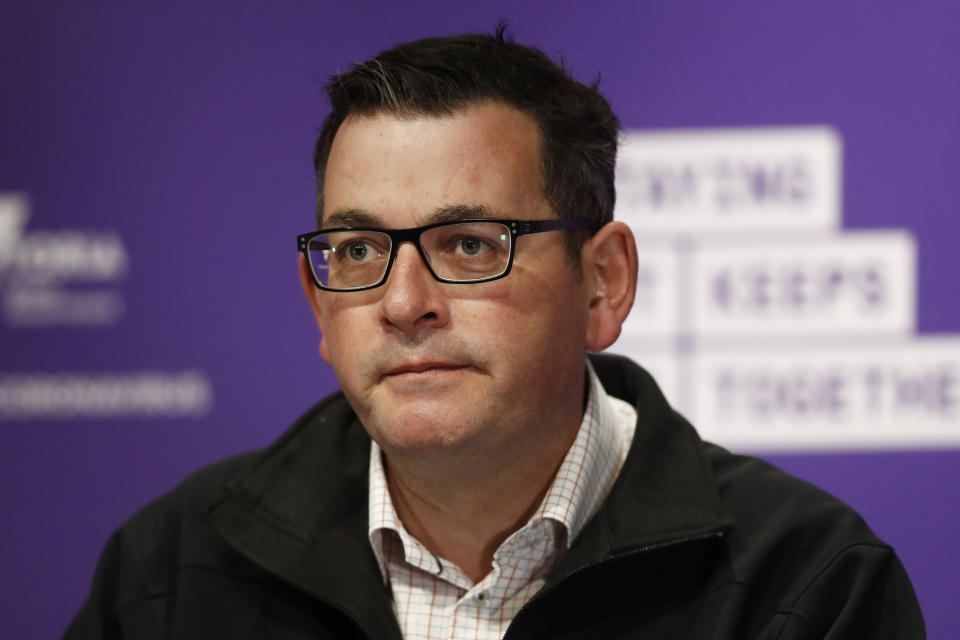'Biggest driver' behind Victoria's record coronavirus spike
Victoria Premier Daniel Andrews has revealed the biggest driver behind the state’s spike in coronavirus cases as he announced a record 532 new infections on Monday.
Mr Andrews told reporters Victorians must not go to work if they have any symptoms at all and need to come forward and be tested for coronavirus.
“We continue to see far too many people in that setting and in other settings – it doesn’t matter what you do for a job, doesn’t matter what industry, what sector you work in – if you are going to work with symptoms, if you are going to work when you’re sick, then you will inevitably be spreading this virus,” he said.

“This is the biggest driver, it’s not the only issue, but it is the biggest driver of transmission.
“It is the biggest driver of these numbers going up rather than going down.”
Mr Andrews added this was the key message of the day and would continue to be until the state saw the number of people presenting for work as as if they didn’t have symptoms start to drop.
“Presenting to work when they're a close contact of someone who has symptoms, pretending that they aren't,” he said.
“This is just not acceptable.”

Mr Andrews said he was grateful to all Victorians who were staying home from work and getting tested for symptoms, but pleaded for everybody in Melbourne and the Mitchell Shire to do the right thing.
“My message, my request, my plea to all Victorians, particularly those in Melbourne and Mitchell Shire, but this does apply to every single Victorian regardless of their workplace, if you are sick, even mildly, you just can’t go to work,” he said.
“The only thing you can do is get tested. The only thing you can do is then wait at home, not going to the shops, not going anywhere, until you get your test results.
“And if you're negative, then you can go about your business. If you are positive, then you'll need to be at home for that 14-day period.”
Why people may continue to go to work
Mr Andrews said some people had been reserved when discussing symptoms or a positive result with family members, but did not want anybody to feel a sense of awkwardness or embarrassment.
“They might see that as somehow being a reflection on their family or a reflection on them. This does not discriminate. This does not discriminate. No one will be criticised or judged for doing the right thing. That's exactly what we want to see happen. You got a sniffle, a scratchy throat, a headache, fever, then you can't go to work,” he said.
He also understood there could be other economical impacts of taking some time off work.
“We know from some of that analysis, financial hardship or the prospect of not working shifts and, therefore, not getting paid. That's one factor,” he said.
“We're still working very hard – not just crunching numbers, but also having a look at some of the details that are provided to us through those very long first-off interviews to try to better understand patterns, to better understand what's driving that.”
Cases sore past 500 as six people die
There were 532 confirmed infections in the past 24 hours, Mr Andrews announced on Monday.
The daunting figure eclipses the previous highest of 484 last Wednesday, and indicates health authorities have yet been able to get on top of community transmission in the Melbourne area in what is now week three of its six-week lockdown.
The figure also sets a new daily record for new cases in Australia.
“We're at a very challenging stage with this wave,” Chief Health Officer Brett Sutton said on Monday.
On Monday, Mr Andrews confirmed a further six deaths.
The latest victims are a woman in her 90s, a woman in her 80s, a woman in her 70s, a man in his 80s, a man in his 70s and a man in his 50s. Five of the six are from aged care facilities.
Victoria has recorded 32 deaths in just five days, taking its overall death toll to 77.
Do you have a story tip? Email: newsroomau@yahoonews.com.
You can also follow us on Facebook, Instagram and Twitter and download the Yahoo News app from the App Store or Google Play.




